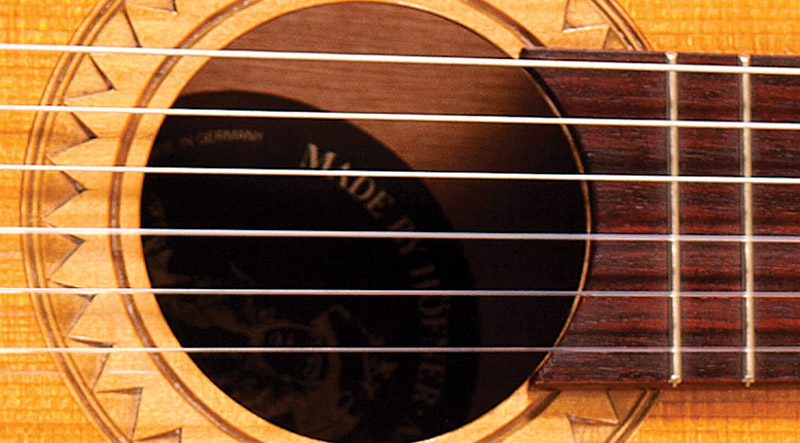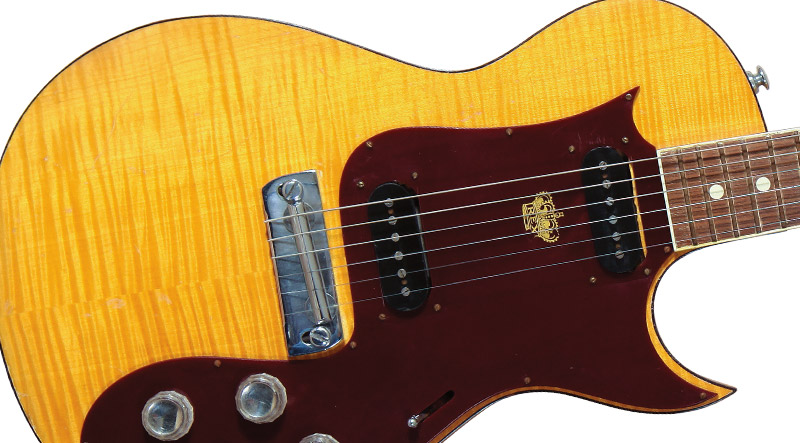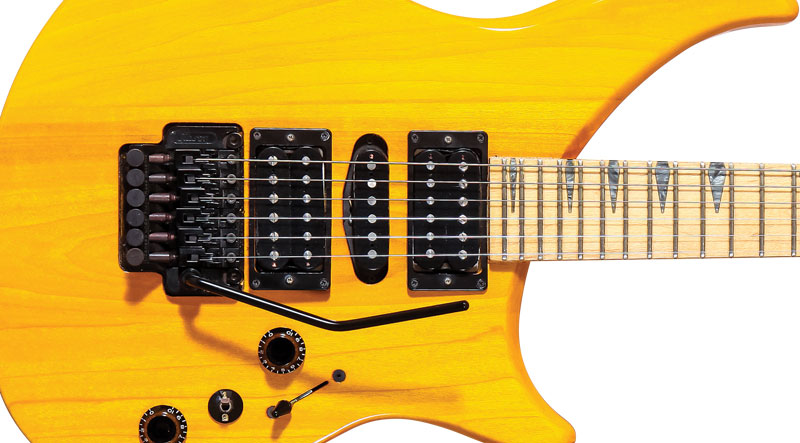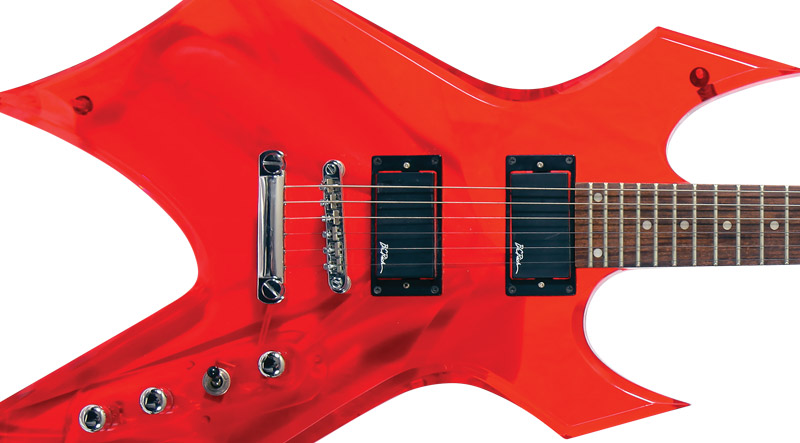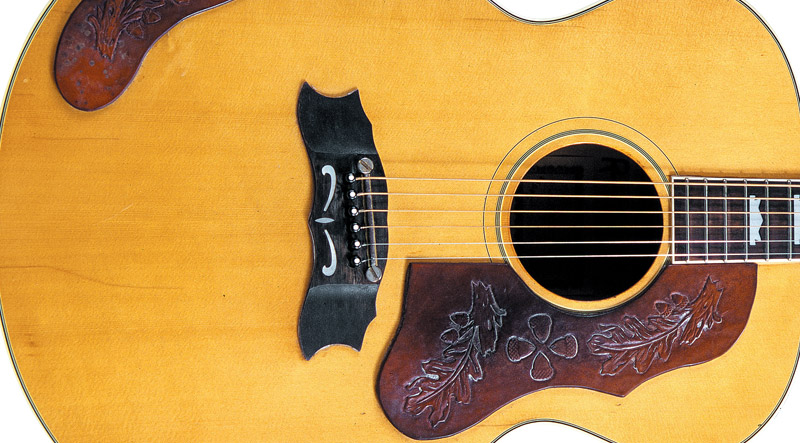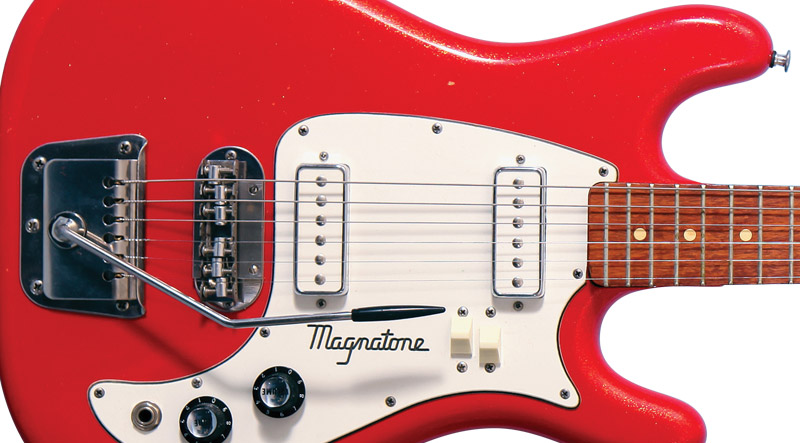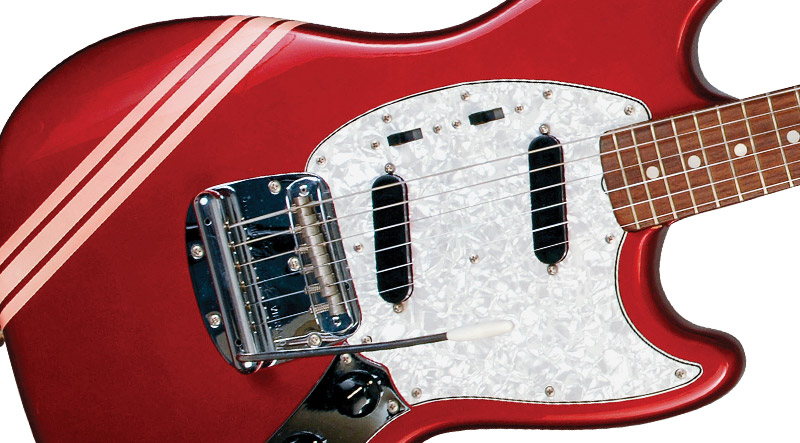-
Michael Wright
The Höfner Model 485G
At the end of World War II, the town of Schönbach, in western Bohemia, became Luby, Czechoslovakia, and the people of German ethnicity were expelled. The changes affected the fortunes of more than Framus and Tatra guitars – it also redirected the trajectory of Höfner guitars, perhaps best known for the “Beatle bass” played by…
-
Michael Wright
Rex Solidbody
Italian Connection
An internet search for “Rex guitars” will turn up a fair – if confusing – amount of information about the brand used on budget guitars and banjos made by Gretsch beginning in the early 20th century. On and off from the mid 1930s until the mid ’50s, Gretsch subcontracted construction of Rex instruments to Harmony…
-
Michael Wright
The Ovation Adamas II
What do you get when you cross a helicopter with a Martin dreadnought? Easy answer – Ovation guitars, perhaps the greatest champion of alternative materials in an age when traditional woods like Brazilian rosewood and Honduran mahogany have become virtually extinct. Among Ovation’s alt-material creations, the Adamas is the ultimate expression. The father of Ovation…
-
Michael Wright
Gibson M-III Standard
Missing the Mark(et)
Gibson’s bread and butter has long been tried-and-true designs that represent remarkable innovations – even if they date back to the 1950s. This is testament to how good those innovations really were! Guitars like this M-III Standard prove the company has also never shied from new ideas. Squeezing maximum tone from pickups has been an…
-
Michael Wright
B.C. Rich Acrylic Warlock
Most industries know a great idea when they see it and aren’t shy about jumping on a bandwagon. In 1969, an electric guitar made out of translucent acrylic proved it. The materials and processes that ultimately yielded acrylic were discovered in the late 18th century, but modern polymethyl methacrylate (acrylic glass) was invented in the…
-
Michael Wright
Penco A-15-JD
The 1970s is often called “the Copy Era” for the dominating presence and spectacular success of Japanese “copies” of popular American guitars, most notably of the Gibson Les Paul. Indeed, it was with these “copies” that many Japanese manufacturers honed their chops and became world-class guitar makers. In fact, it was a lawsuit filed by…
-
Michael Wright
Magnatone X-5 Zephyr
Last Gasp
Ever since Lonnie Mack unleashed The Wham of That Memphis Man and Buddy Holly sang “Peggy Sue,” Magnatone amplifiers have been the stuff of legend. Magnatone guitars, on the other hand, are one of guitardom’s best-kept secrets. The Magnatone story starts at the small Dickerson Brothers factory near the heart of the Los Angeles music…
-
Michael Wright
Gibson Marauder M-1
Every once in awhile, someone in Gibson R&D gets a brainstorm like, “I know! Why don’t we make a bolt-neck guitar!” So they do. And the result is almost always interesting – and almost always a commercial flop. Call it “Les Paul syndrome.” Guitar aficionados are the beneficiaries of both sides of this coin. Not…
-
Michael Wright
The España 6/12 Doubleneck
More is always better, right? Eleven is better than 10 on an amplifier, three pickups are better than two, and so on! That’s the promise of the seven-string. So when Jimmy Page showed up onstage in the ’70s with a doubleneck guitar, crowds went wild. Strum rhythm parts on the 12, break into a solo…
-
Michael Wright
Fender Competition Mustang
Souped-Up Starter
So it’s no surprise that Fender built the Competition Mustang, a guitar marketed to players who might also be excited by the thrill of Monte Carlo and Formula One. Fender introduced its “student model” Musicmaster and Duo-Sonic in 1956 to compete with Harmony and Kay – an optimistic move long before the electric guitar was…

